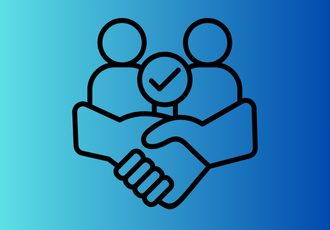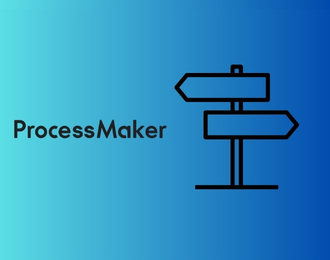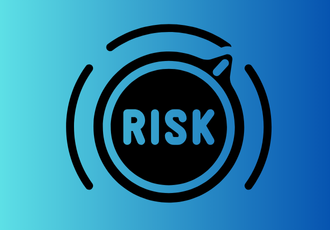Onboarding in healthcare is a critical process that ensures both staff and patients are smoothly integrated into systems, with full compliance and minimal delays. However, many healthcare organisations still rely on inefficient, paper-based onboarding processes that result in delays, human errors, and compliance risks.
With the growing complexity of administrative workflows, many healthcare providers are turning to digital onboarding solutions to streamline operations and enhance patient and employee experiences.This blog post explores the top healthcare onboarding software solutions in 2025, comparing 10 leading tools. We’ll also take a deeper look at how FlowForma stands out from the competition and why it’s the ideal choice for healthcare organisations aiming to modernise their onboarding processes.
What is the Importance of Onboarding in Healthcare?
.png?width=600&height=450&name=Blue%20Gray%20Minimalist%20Circle%20Teamwork%20Infographic%20Presentation%20Graphs%20(21).png)
Importance of healthcare onboarding software
In healthcare, onboarding goes beyond simply filling out forms. It’s about creating an efficient, compliant, and user-friendly process that facilitates the integration of both staff and patients. Effective onboarding is critical for:
1. Regulatory compliance
In the healthcare sector, regulatory compliance is a critical aspect of the onboarding process. Onboarding software must ensure that healthcare organisations adhere to strict regulations such as HIPAA (Health Insurance Portability and Accountability Act), GDPR (General Data Protection Regulation), and NHS regulations.
2. Operational efficiency
An effective onboarding program has a direct impact on the quality of care delivered by healthcare professionals. By ensuring new hires are properly trained and have all the necessary credentials, healthcare organisations can provide better patient care from day one.
3. Patient satisfaction
Providing a seamless onboarding experience for patients ensures a smoother care journey and reduces errors.
4. Employee productivity
Healthcare onboarding software can transform the hiring process by automating manual data entry, improving the credentialing process, and reducing human errors.
This automation enhances the experience for new hires and ensures timely communication between departments. Integration with other systems allows for real-time reporting, which helps HR teams track employee progress and identify areas for improvement.
Top Healthcare Onboarding Software in 2025
Now, let’s look at the top healthcare onboarding software solutions that can help solve onboarding challenges faced by healthcare organisations in 2025.
|
Product Name |
Best For |
Pricing |
Approved NHS Vendor |
|
FlowForma |
Mid to large-sized healthcare providers |
From £2,067/month |
Yes |
|
Kissflow |
SMBs with simple workflows |
From £1,500/month |
No |
|
Nintex |
Enterprises with complex workflows |
Custom pricing |
Yes |
|
MS Power Apps |
Microsoft-centric organisations |
Subscription-based |
Yes |
|
Creatio |
CRM + BPM integration |
Custom pricing based on usage and specific modules |
Yes |
|
Appian |
Large enterprises with complex needs |
Custom pricing |
Yes |
|
Formstack |
SMBs and mid-sized providers |
Affordable, scalable pricing options |
No |
|
ProcessMaker |
Mid-market healthcare firms |
Based on users |
No |
|
Kintone |
SMBs and small teams |
From $24/user/month |
No |
|
Ninox |
Small teams and startups |
From €11/user/month |
No |
10 Best Onboarding Software for the Healthcare Industry in 2025
Now that we’ve provided a quick overview of each solution, let us look at each tool in detail.
1. FlowForma

Example of healthcare onboarding process steps using FlowForma
FlowForma is an all-in-one, no-code process automation platform designed to simplify and automate healthcare onboarding processes, ensuring compliance and improving operational efficiency.
Trusted by healthcare institutions—such as the NHS in the UK, the Liverpool School of Tropical Medicine, and Beaumont Hospital in Ireland—FlowForma can effectively automate workflows for staff and patient onboarding, compliance tracking, and document management.
FlowForma Key Features
1. No-code interface
One of the standout features of FlowForma is its no-code interface, which allows healthcare organisations to easily create and modify workflows without needing any technical expertise.
Whether it's for patient onboarding, staff scheduling, or compliance tracking, healthcare teams can utilise FlowForma’s drag-and-drop interface to create tailored workflows that meet their unique needs. Watch this demo to see how FlowForma automates the healthcare onboarding process:
Automate healthcare onboarding with FlowForma
2. Advanced AI
With FlowForma’s AI Copilot, healthcare providers can use natural language to effortlessly create and modify workflows. This feature is particularly beneficial for automating tasks such as patient intake, appointment scheduling, and staff onboarding.
Want to learn more? Try out our AI Copilot playground for NHS and build onboarding workflows within seconds!

AI Copilot for NHS
Moreover, Agentic AI enhances the workflow experience by making real-time, intelligent decisions.
For example, it can escalate urgent patient cases or automatically pause processes for missing information, ensuring that no step is overlooked. This adaptive decision-making capability optimises patient care by ensuring that workflows remain dynamic and aligned with the most urgent needs.
3. Seamless Microsoft 365 integration
FlowForma seamlessly integrates with the Microsoft 365 ecosystem, including SharePoint, Teams, and Outlook, which is particularly beneficial for healthcare providers already using Microsoft tools.

FlowForma offers seamless integrations
For example, patient intake forms or staff onboarding workflows can be automated within FlowForma while keeping all the data within Microsoft SharePoint for easy storage and retrieval.
This integration eliminates data silos and ensures smooth collaboration across departments.
4. Automated document generation
FlowForma automates the creation of essential documents, including appointment confirmations, patient consent forms, staff contracts, and regulatory reports. This feature is crucial for ensuring that documentation is accurate, timely, and compliant with regulations such as HIPAA and GDPR.

Automate document management for onboarding with FlowForma
Once a workflow is completed—whether it's a patient’s registration or an employee’s training completion—FlowForma automatically generates and distributes the necessary documents to relevant stakeholders. This eliminates the need for manual document handling, reducing errors and freeing up time for administrative staff to focus on higher-value tasks.
5. Compliance and audit trails
Maintaining compliance in healthcare is non-negotiable. FlowForma makes this simple with built-in compliance features and audit trails. The platform automatically records every action taken during a process, from form submissions to document generation, and stores this data in a readily accessible audit trail.

FlowForma’s compliance module
For healthcare organisations, this feature is essential for meeting legal requirements and ensuring that all actions taken in the onboarding process are fully documented.
6. Custom Forms for Tailored Onboarding
One of FlowForma’s standout features is its ability to create custom forms tailored to the specific needs of different departments or healthcare services.
For instance, a patient entering a cardiology consultation may be asked to fill out different questions than one entering for an orthopaedic follow-up.
Using conditional logic, the forms adapt to patient responses, dynamically displaying relevant questions based on previous answers.
FlowForma Pros
- Predictable, process-based pricing with no hidden costs
- Automates decision-making and document generation
- No IT support required for workflow creation and management
- Approved NHS vendor
- Offers analytics and reporting capabilities for real-time monitoring of workflows
FlowForma Cons
- Best suited for healthcare organisations already using Microsoft 365/SharePoint
FlowForma Pricing
Pricing starts from £2,067 per month for three processes. All tiers include access to the platform’s core features such as AI Copilot, onboarding processes, form and workflow automation, as well as Microsoft 365 integration.

FlowForma pricing page
💡Real-world example: How Blackpool Teaching Hospital simplified its onboarding process with FlowForma
FlowForma NHS Case Study
Blackpool Teaching Hospitals successfully transformed its employee and staff onboarding workflows using FlowForma's no-code process automation platform. The hospital had been burdened with time-consuming paper-based processes that were prone to errors and inefficiencies, significantly slowing down staff onboarding and the completion of crucial administrative tasks.
|
“Whilst offering simple functions out of the box, it also caters to more complex requirements, but delivered in an easy format. Another huge benefit of FlowForma Process Automation is the simplicity around user permissions.” Martyn McKechnie Head of Digital Identity and System Administration Blackpool Teaching Hospitals NHS Foundation Trust |
FlowForma enabled the hospital to automate tasks, eliminate paper-based systems, and integrate seamlessly with existing tools, streamlining communication and data sharing across departments.
As a result, staff onboarding became faster, compliance was maintained effortlessly, and the hospital saved a significant amount of time and resources.
2. Kissflow

Kissflow healthcare page
Kissflow is a low-code automation platform ideal for small to mid-sized healthcare organisations looking to automate simpler onboarding workflows. Kissflow is user-friendly and offers a flexible, intuitive interface for creating forms, managing cases, and automating processes.
Kissflow Key Features
- Easily build custom forms for patient intake and employee registration
- Helps manage patient or staff onboarding cases through dedicated modules
- Automate approval workflows for faster onboarding
- Secure data access for different team members
Kissflow Pros
- Quickly deploy and automate basic workflows
- Suitable for multiple workflows beyond onboarding
- Integrates with other tools like CRM, HR systems, and more
Kissflow Cons
- May not be suitable for larger healthcare organisations with more complex needs
- Limited reporting functionality at lower pricing tiers
3. Nintex

Health & Life Sciences Page from Nintex
Nintex is a process automation platform that caters to large healthcare organisations with complex onboarding needs. It supports document management, e-signatures, workflow automation, and reporting.
Nintex Key Features
- Automates multi-step, complex onboarding workflows
- Create and manage patient and employee documents automatically
- Secure, legally binding eSignatures integrated into workflows
- Seamlessly integrates with other enterprise systems.
Nintex Pros
- Includes advanced features such as e-signatures and detailed reporting
- Suitable for large healthcare organisations
- Provides support for international teams
Nintex Cons
- Has a high learning curve for non-technical users
- Custom pricing can be expensive, especially for smaller healthcare providers
4. Microsoft Power Apps

Microsoft Power Apps Homepage
Microsoft Power Apps is a Microsoft platform that enables healthcare organisations to build custom applications and automate workflows. Its integration with other Microsoft products makes it a suitable choice for organisations already embedded in the Microsoft ecosystem.
MS Power Apps Key Features
- Build custom applications for patient and employee onboarding
- Streamline tasks such as approvals, notifications, and task assignments
- Automate data processing and document handling using AI
- Integrates with Microsoft tools
- Access pre-built templates for common onboarding processes
MS Power Apps Pros
- Ideal for organisations already using Microsoft tools
- Customisable workflows to meet your specific needs
MS Power Apps Cons
- Users need some technical knowledge to fully leverage the platform
5. Creatio

Creatio healthcare page
Creatio combines CRM and BPM (Business Process Management) functionalities to offer an integrated solution for healthcare organisations. Its focus on workflow automation and customer engagement makes it a suitable tool for healthcare onboarding processes.
Creatio Key Features
- Automate multi-step processes for employee and patient onboarding
- Uses built-in CRM tools to manage patient and staff relationships
- Omnichannel engagement to communicate with patients and staff across various channels
- Self-service portals to allow patients and staff to complete forms and onboarding tasks independently
Creatio Pros
- Integrates CRM, BPM, and workflow automation in one platform
- Leverages AI for process improvements
- Advanced reporting for gaining insights into process performance and patient satisfaction.
Creatio Cons
- Requires training and may be challenging for users without experience in CRM or BPM
- Steep pricing
6. Appian

Appian's life sciences page
Appian is a low-code platform that supports large-scale automation in healthcare. With BPM capabilities and a focus on process orchestration, Appian supports complex, multi-departmental workflows, such as employee and patient onboarding.
Appian Key Features
- Low-code automation helps build and automate complex workflows
- Integration with enterprise and legacy systems
- Real-time dashboards to monitor workflow performance and key metrics
- AI-powered decision-making: Automate decisions based on data and workflow rules
Appian Pros
- Suited for large healthcare organisations with complex needs
- Offers customisation for specific healthcare workflows
- Can handle high volumes of users and data.
Appian Cons
- Business users will require technical expertise to fully utilise its features
- Custom pricing is typically high, making it expensive for smaller organisations
7. Formstack

Formstack healthcare page
Formstack is a no-code form and workflow automation tool that helps healthcare organisations automate onboarding and other adjacent workflows. It is simple to set up and is a good choice for small to mid-sized practices.
Formstack Key Features
- Creates digital forms for patient intake, consent, and staff onboarding
- Automates approval processes and data collection
- Automated document management to generate forms, contracts, and reports
- Integrates with other tools like CRMs and HR systems
- Compliant with HIPAA, making it a secure option for healthcare organisations
Formstack Pros
- Easy to set up and use, even for non-technical staff
- Cost-effective solution for small-sized teams
- Customisable for tailored onboarding workflows
Formstack Cons
- Not suited for enterprises
- Lacks advanced features (such as advanced AI) found in enterprise-grade tools
8. ProcessMaker

Process Maker healthcare page
ProcessMaker is a workflow automation platform that helps healthcare organisations automate and optimise processes. It’s ideal for mid-market providers seeking a flexible and cost-effective solution for onboarding.
ProcessMaker Key Features
- Helps automate patient and employee onboarding, approvals, and notifications
- Secure document management features
- Integrates with various business tools such as CRMs and EHR systems
- Built-in analytics to gain insights into workflow performance
- Mobile app to access and manage workflows from any device
ProcessMaker Pros
- Easy to implement and use, with minimal technical expertise required
- Customisable, allowing organisations to tailor workflows
- Cost-effective for mid-market healthcare providers
ProcessMaker Cons
- May not be ideal for large healthcare organisations with complex needs
- While it integrates with many tools, the integration options are not as advanced as those offered by competitors
9. Kintone

Kintone’s homepage
Kintone is a no-code platform that enables healthcare organisations to automate processes and build custom apps for onboarding. Its simplicity and flexibility make it a suitable fit for smaller teams seeking to automate basic workflows.
Kintone Key Features
- Custom app building for staff and patient management
- Workflow automation for basic onboarding processes, including task assignments and approvals
- Built-in tools for team collaboration and communication
- Reporting and analytics to track the performance of onboarding workflows
Kintone Pros
- Simple to use for non-technical users
- Customisable workflows meet specific needs
- Affordable for small healthcare teams with budget constraints
Kintone Cons
- Lacks some advanced features found in enterprise-level tools
- May not handle large-scale or complex workflows effectively
10. Ninox

Ninox homepage
Ninox is a versatile, low-code platform that allows healthcare organisations to automate workflows, manage data, and create custom applications for onboarding staff and patients.
Ninox Key Features
- Custom app building for patient and staff management
- Automate simple onboarding processes with task assignments and approvals
- Collaboration tools to share data and collaborate on workflows across teams
- Integrates with a range of tools for streamlined data management
- Mobile access helps manage workflows from any device
Ninox Pros
- Flexible for specific healthcare needs
- Suitable for non-developers who need to automate basic processes
- Cost-effective solution for small to mid-sized healthcare providers
Ninox Cons
- May not handle complex workflows or large-scale automation needs
Key Considerations While Selecting Healthcare Onboarding Software
.png?width=600&height=450&name=Blue%20Gray%20Minimalist%20Circle%20Teamwork%20Infographic%20Presentation%20Graphs%20(22).png)
Things to look for in healthcare onboarding software
When selecting healthcare onboarding software, consider the following:
1. Ease of use
The platform should be intuitive and easy to navigate, allowing non-technical users, such as HR personnel and department managers, to build and manage workflows with minimal training.
2. Compliance
Ensure the software complies with healthcare regulations like HIPAA and GDPR. The right onboarding solution should have built-in features for secure data handling, ensuring sensitive patient and employee information is collected, stored, and shared in compliance with industry standards.
3. Integration
The best healthcare onboarding solution should seamlessly integrate with your existing systems, such as HR, EHR, and CRM tools.
Integration enables real-time reporting and analytics, providing you with up-to-date insights into your workflows.
4. Scalability
As your healthcare organisation grows, your onboarding software should be able to scale to accommodate new departments, employees, and more complex workflows.
A scalable platform ensures that you can easily expand your processes and workflows to keep pace with organisational growth.
5. Customisation and flexibility
Healthcare organisations have unique needs, and the right onboarding software should offer customisation and flexibility.
The platform should allow you to tailor workflows to meet specific departmental needs, such as integrating department-specific questions or training tasks. With flexible onboarding, new hires can have a personalised experience that better suits their role, enhancing their overall experience and improving patient care.
6. Real-time data monitoring
An effective onboarding software should provide real-time data and analytics to track the success of your workflows.

FlowForma insights page
With reporting capabilities, healthcare organisations can monitor key performance metrics, identify areas for improvement, and ensure compliance with regulatory standards.
Why FlowForma is the Best Onboarding Software for the Healthcare Industry

FlowForma customer testimonials
Choosing the right healthcare onboarding software is essential for streamlining operations, improving patient and employee satisfaction, and ensuring continuous compliance.
FlowForma stands out as the top choice in 2025, offering no-code automation, AI-driven capabilities, and transparent pricing. With its intuitive interface and seamless integration with Microsoft 365, it’s the ideal solution for mid to large-sized healthcare providers.
Book a demo today to see how FlowForma can streamline your healthcare processes.
.png) By
By 




